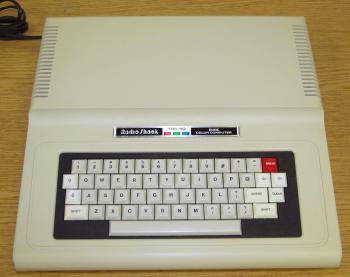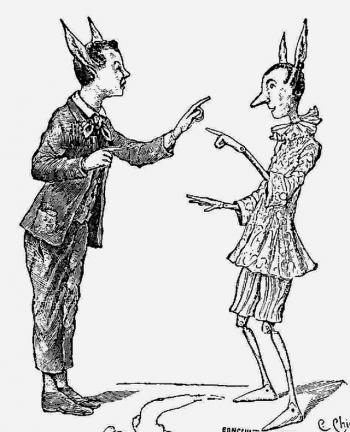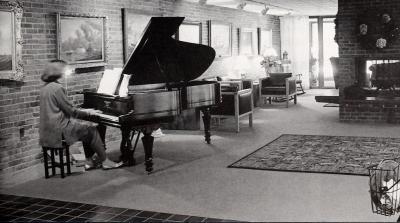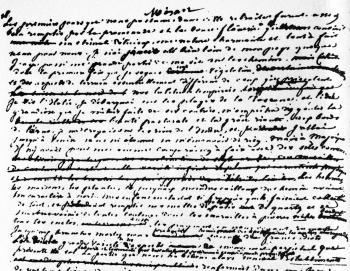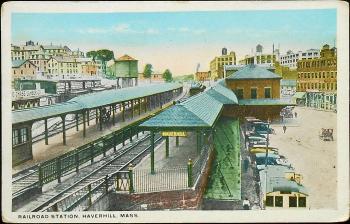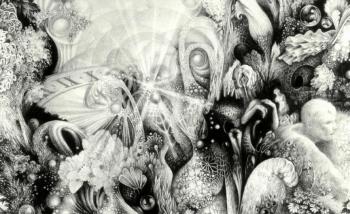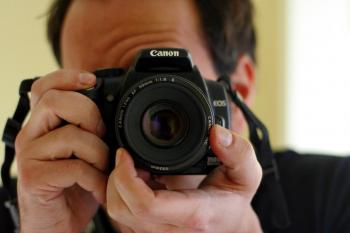Users Who Spiked

USING YOUR IMAGINATION
Private Notes
Private Notes
Notes
Using Your Imagination
"Nothing happens unless first a dream."
Carl Sandburg
"All acts performed in the world begin in the imagination."
Barbara Grizzuti Harrison
I believe that part of your 'work' as an artist is to create a space in your mind that allows you to fully imagine.
When I was writing my Master's thesis which was a movie script, I made the long drive into town each day with the radio off. As the rural landscape flowed by outside my car, I let myself imagine the next scene in my drama. Every day I could envision about five more minutes in detail. I could actually 'see' in my mind's eye every shot, every movement, every character, and the way they talked and moved. Sometimes I would speak the character's lines just to see how they sounded. The following night I would write down what I had imagined earlier in the day. In the end, I had a full script and I also had a Master's degree.
The famous inventor Nikola Tesla developed the power of imagination to an incredible degree. He said that he could imagine one of his inventions as though it was real. He could actually see it right in front of him. And when this happened he could engineer the device as easily as testing it in a workshop. Actually easier. Read his description of this process at the end of this article.
Yet, like everything in life, imagination takes work. Tesla did not just wake up one morning and fully imagine something. His imagination had been developed over time. This is not unlike the 'thought experiments' of Albert Einstein who could fully imagine riding on a beam of light or chasing a beam of light, starting in his teenage years.
There are many ways to use and apply your imagination. Here, for example, is a different way.
In the past before widespread literacy, inexpensive books, and cheap pencils, pens, and paper, many people trained themselves to remember vast amounts of knowledge. This was an ancient skill that has definitely been lost in the modern era.
One technique was to imagine a cathedral with sections of walls where you would place various things you wanted to remember. This was often accompanied by a picture of the subject matter. Known by various names such as the memory theater, skilled practitioners could quickly and accurately remember huge amounts of information simply by walking through these areas in their imagined cathedral of the mind.
The interior of the cathedral in Padua, Italy, with the famous paintings by Giotto was a model for some people of such an imagined space. See the cover picture for this article.
Here are some links that explain this idea in more detail
Art of memory
https://en.wikipedia.org/wiki/Art_of_memory
Architectural mnemonic
Method of loci
https://en.wikipedia.org/wiki/Method_of_loci
Building an imaginative space in your mind is the creation of an artistic tool you can use anywhere, anytime and is quite powerful. Full use of your imagination is like going into another room or another building. After a while, you can walk in and see the world from that point of view.
If you have a fully developed imagination, you can do much of your work inside your head. So when you get to actually sitting down and putting your painting, your song, your video, your software together you have done much of the work already.
After a while, it becomes like a familiar space you can enter and pick up where you left off. Don't be surprised if you are accused of daydreaming because, in a sense, that is what you are doing, only you are doing it in a controlled way.
So if you find yourself stuck in an airport for a few hours, you can just walk into this imaginative space and work on your latest project.
But like any skill, it takes a while to fully develop. Seeing things almost as though they were real, as Tesla did, is not something many people can do.
Imagination is quite flexible so allow yourself to combine reality with your imaginative ideas, for example.
Here is an example of that:
I decided to build a small workspace in the woods just a few feet from our house. I made some measurements and decided on a building that was 12 ft x 12 ft. Next, I went into the woods where the building was to be constructed and marked out a 12x12 floor space. Then I walked around in that space imagining that it was the completed building. I could visualize where the computer would go and what I would see through the windows. When the building was finished it was almost exactly as I had imagined it.
HERE IS A DETAILED DESCRIPTION OF HOW TESLA IMAGINED INVENTIONS
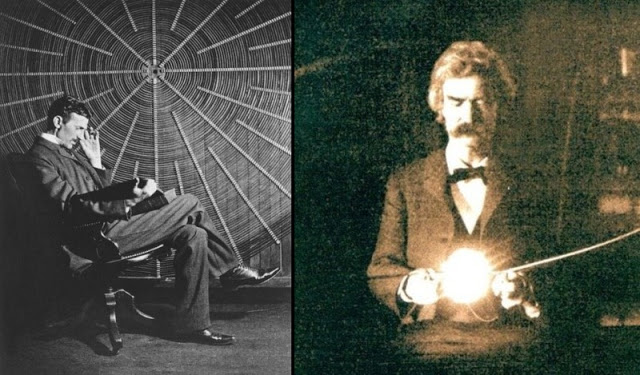
Two great men who lived by their imagination:
(Left) Nikola Tesla "in front of the spiral coil of his high-voltage Tesla coil transformer" in 1896.
https://commons.wikimedia.org/wiki/File:Teslathinker.jpg
(Right) Mark Twain playing with electricity in Tesla's lab in 1895.
Tesla's description of his imaginative method.
By that faculty of visualizing...I have evolved what is, I believe, a new method of materializing inventive ideas and conceptions. It is a method which may be of great usefulness to any imaginative man, whether he is an inventor, businessman, or artist.
Some people, the moment they have a device to construct or any piece of work to perform, rush at it without adequate preparation, and immediately become engrossed in details, instead of the central idea. They may get results, but they sacrifice quality.
Here, in brief, is my own method: After experiencing a desire to invent a particular thing, I may go on for months or years with the idea in the back of my head. Whenever I feel like it, I roam around in my imagination and think about the problem without any deliberate concentration. This is a period of incubation.
Then follows a period of direct effort. I choose carefully the possible solutions of the problem. I am considering, and gradually center my mind on a narrowed field of investigation. Now, when I am deliberately thinking of the problem in its specific features, I may begin to feel that I am going to get the solution. And the wonderful thing is that if I do feel this way, then I know I have really solved the problem and shall get what I am after.
This feeling is as convincing to me as though I already had solved it. I have come to the conclusion that at this stage the actual solution is in my mind subconsciously, though it may be a long time before I am aware of it consciously.
Before I put a sketch on paper, the whole idea is worked out mentally. In my mind, I change the construction, make improvements, and even operate the device. Without ever having drawn a sketch, I can give the measurements of all parts to workmen, and when completed these parts will fit, just as certainly as though I had made accurate drawings. It is immaterial to me whether I run my machine in my mind or test it in my shop.
The inventions I have conceived in this way, have always worked. In thirty years there has not been a single exception. My first electric motor, the vacuum tube wireless light, my turbine engine, and many other devices have all been developed in exactly this way.





















